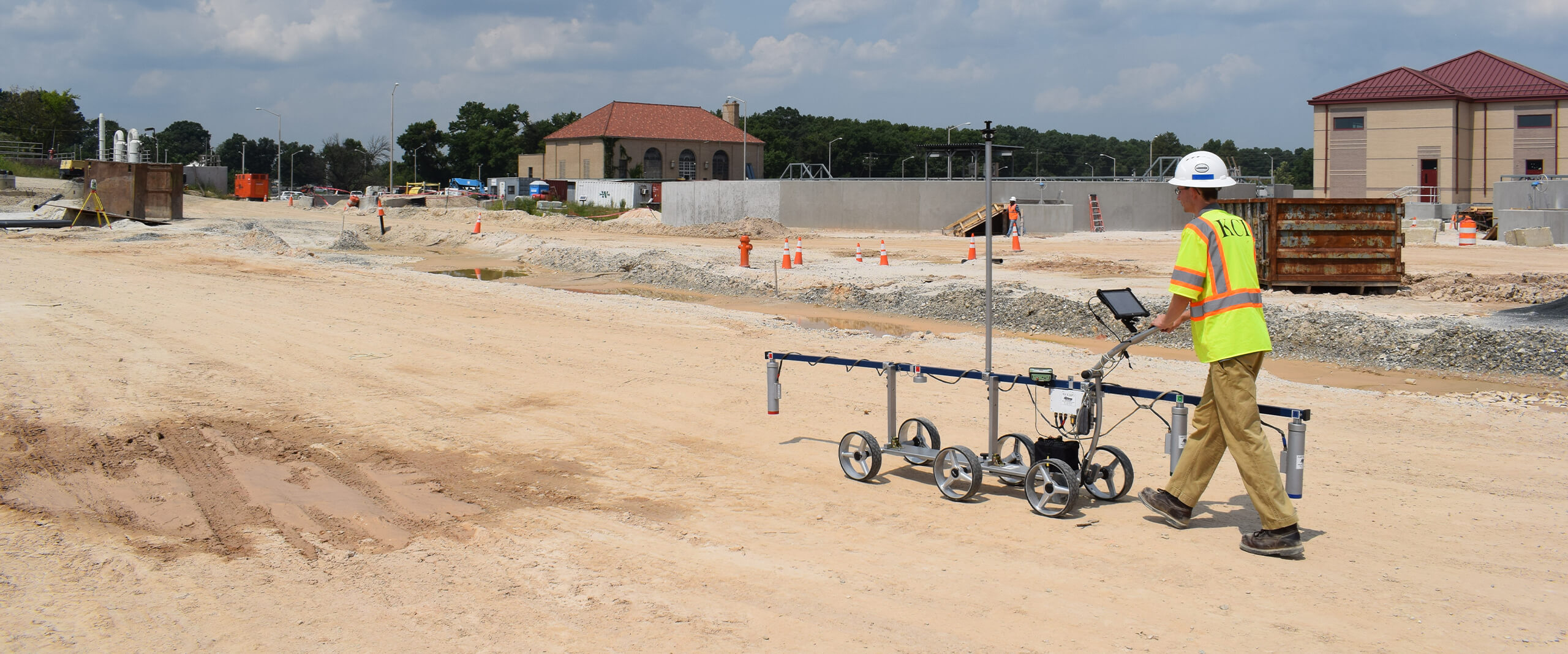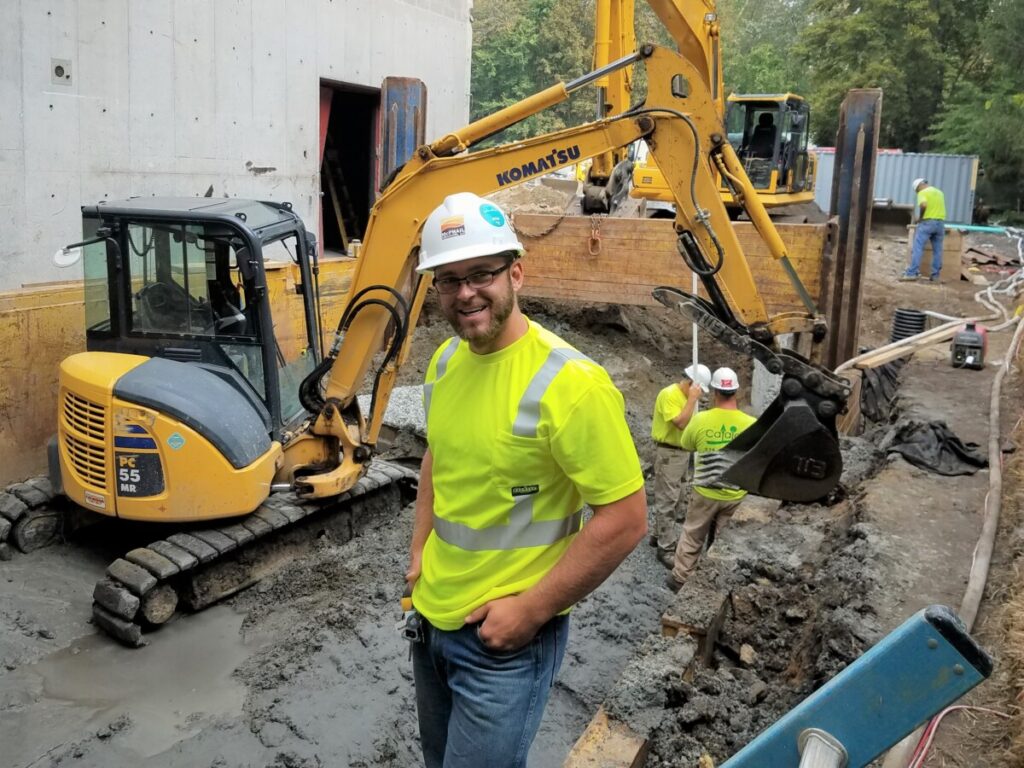A Comprehensive Take A Look At the Extent of Method for Geotechnical Designers and Their Effect On Task Expediency and Threat Mitigation
The range of practice for geotechnical engineers encompasses a range of crucial obligations that directly influence job feasibility and danger administration. What specific techniques do geotechnical designers utilize to browse these intricacies efficiently?
Functions and Obligations of Geotechnical Engineers
Geotechnical engineers play a crucial role in the foundation of building and construction jobs, guaranteeing that frameworks are developed on solid ground. Geotechnical designers conduct site examinations to collect crucial information relating to subsurface conditions.

Collaboration is also a vital element of their duty; they work carefully with civil designers, architects, and environmental specialists to guarantee that geotechnical factors to consider are integrated into total project preparation. Eventually, the know-how of geotechnical designers is vital in advertising the safety and security, sustainability, and practicality of building and construction endeavors.
Trick Areas of Geotechnical Evaluation
Soil samples and geological surveys are fundamental elements in the key locations of geotechnical evaluation. These activities supply essential information relating to the physical and chemical properties of the subsurface materials, enabling engineers to assess site problems accurately. The evaluation usually encompasses dirt category, compaction, shear toughness, and leaks in the structure, all of which are important for recognizing the habits of soils under various loading conditions.
One more considerable area of emphasis is incline stability analysis, which examines the danger of landslides or soil erosion. This entails assessing the geometry of slopes, soil types, and groundwater conditions. Site characterization is also critical, as it entails a thorough examination of the site's background, including previous construction, contamination, and natural hazards.
In addition, groundwater evaluation plays a crucial role in geotechnical assessment, influencing both the layout and building and construction stages. Understanding the groundwater table, flow instructions, and potential fluctuations is crucial for effective foundation design and stormwater monitoring.
Together, these crucial locations of geotechnical evaluation create a detailed framework that informs decision-making procedures, ensuring lasting and risk-free engineering techniques while lessening prospective threats related to subsurface problems.
Effect On Project Expediency
The expediency of a construction project hinges considerably on the understandings got from geotechnical investigations. These examinations supply crucial data regarding dirt homes, groundwater conditions, and subsurface qualities, which are critical for determining the suitability of a site for building and construction. By analyzing variables such as dirt bearing capability, negotiation capacity, and incline stability, geotechnical designers play a crucial function in assessing whether a job can continue as prepared or if modifications are necessary.
Moreover, the outcomes of geotechnical researches straight influence project style and construction techniques. Exact geotechnical data enables notified decision-making, ensuring that architectural layouts fit site-specific conditions and conform with regulative requirements. This process helps in enhancing resource appropriation, thereby minimizing unforeseen delays and cost overruns.
In addition, an extensive geotechnical evaluation improves the overall feasibility of a job by determining prospective difficulties early in the preparation phase. By resolving these difficulties proactively, stakeholders can enhance the project's likelihood of success, ensuring that it meets both monetary and functional purposes. In summary, the payments of geotechnical designers are essential to developing job expediency, thereby laying the groundwork for reliable job execution.
Risk Mitigation Techniques
While building and construction jobs inherently entail different unpredictabilities, applying efficient threat reduction strategies can dramatically decrease potential concerns arising from geotechnical variables. Geotechnical designers play an essential function in recognizing, analyzing, and addressing dangers associated with subsurface conditions, making certain that projects proceed smoothly and remain within spending plan.
One main method involves detailed site investigations, that include dirt sampling, in-situ screening, and lab evaluation. These analyses supply critical information on dirt structure, stamina, and actions, enabling designers to design structures and earthworks that are both reliable and risk-free. Using innovative modeling strategies, such as finite element evaluation, permits designers to predict how soil and architectural communications might develop under various loading conditions.
An additional reliable mitigation technique is the implementation of proper design alterations, such as using support methods or taking on alternative building methods, which can boost stability and reduce susceptability to geotechnical issues. Additionally, constant surveillance of site conditions throughout building and construction can assist in timely treatments, therefore minimizing the likelihood of unanticipated complications.
Situation Studies and Real-World Applications
Study supply important insights into the practical applications of geotechnical engineering concepts and highlight the efficiency of danger reduction techniques in real-world situations. One notable instance is the construction of the Millennium Dome in London, where cutting-edge ground therapy strategies were executed to resolve tough soil conditions. By using deep cement mixing and soil stabilization methods, engineers effectively developed a steady foundation that minimized possible negotiation risks, making sure the project's feasibility.
An additional instance is the stabilization of the hillside for the new highway in The golden state, where comprehensive slope analysis and monitoring were employed. Geotechnical designers made use of retaining wall surfaces and drain systems to take care of groundwater, considerably lowering the threat of landslides. This positive approach not check here only maintained the stability of the freeway however likewise boosted public safety.
Furthermore, the development of a significant airport incurable showed the importance of look at here thorough website examinations. civil consulting engineers. Geotechnical designers identified problematic soil layers and advised particular foundation styles, resulting in a successful task completion with minimized hold-ups. These study underscore the essential role that geotechnical engineers play in analyzing risks and implementing reliable options, thus boosting job expediency and total success
Verdict

By assessing variables such as dirt bearing capability, negotiation potential, and incline stability, geotechnical designers play a crucial function in assessing whether a job can proceed as prepared or if adjustments are essential.
In recap, the payments of geotechnical engineers are important to developing task feasibility, thereby laying the foundation for efficient job implementation.
Geotechnical engineers recognized problematic soil layers and suggested certain foundation styles, leading to a successful project completion with reduced delays. geotech engineer. These situation researches underscore the crucial function that geotechnical engineers play in assessing threats and applying effective options, consequently enhancing job expediency and total success
With reliable threat reduction methods and the application of innovative address modeling methods, geotechnical engineers improve task results and reduce dangers related to dirt and groundwater problems.